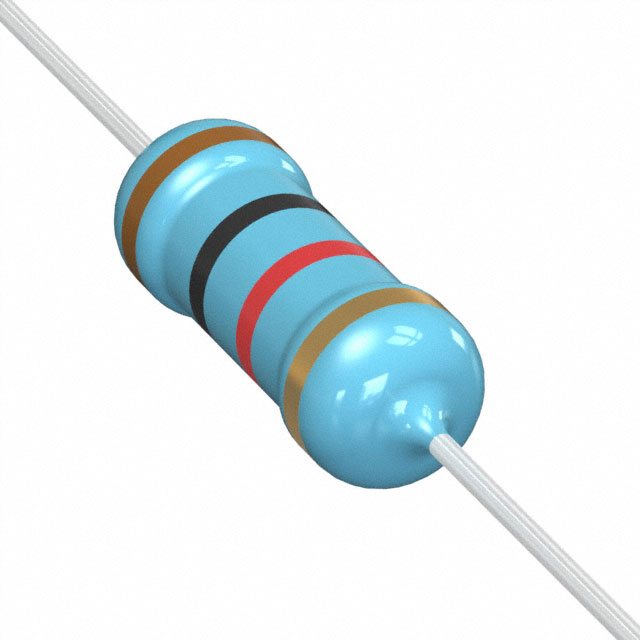Home› news› Explaining the color bands and how to calculate resistor color rings
Fundamental Color Band Knowledge
Although resistors are just one of the "small roles" among electronic components, they are essential components in various circuits. Have you ever wondered what those colored stripes on resistors mean? They are actually a very ingenious "coding language".
For some explanations about coding languages, you can take a look at my article here
This color band system follows the IEC 60062 international standard. It acts as the "ID card" of the resistor, using different colors to represent different digits, multipliers, and tolerance ranges. Through this system, we can quickly determine a resistor's resistance value, its precision, and even its sensitivity to temperature changes in some cases.
Why Use Colors for Marking?
The reason for using colors is that many resistors are extremely small. If their values were marked with text, it would not only be difficult to read but also increase production costs. The color band system easily solves these issues: whether you're a novice or an engineer, once you understand the relationship between colors and digits, you can quickly "decode" the resistance value.
For example
If you see a resistor with Red, Brown, Yellow, and Gold bands, it represents a resistance value of 240kΩ with a 5% tolerance. Isn't that amazing? It's like a "small color ring" containing "big information".
Common Combinations of Resistance Values and Tolerances
Four-Band Resistors
- The first two bands indicate the significant digits of the resistance value.
- The third band represents the multiplier (the number of zeros to add after the significant digits).
- The first three bands together represent an approximate value.
- The fourth band indicates the tolerance range (precision level). If the fourth band is Gold or Silver, it represents the tolerance.
- To identify the first band: If it's hard to distinguish whether a band at one end is Gold or Silver, the Gold or Silver band at the other end is likely the tolerance band.
For example
- Red, Brown, Yellow, Gold → 24×10⁴ = 240kΩ, tolerance 5%
- Green, Red, Yellow, Silver → 52×10³ = 520kΩ, tolerance 10%
Five-Band Resistors
- The first, second, and third bands represent the first, second, and third significant digits of the resistance value.
- The fourth band represents the multiplier (the number of zeros to add).
- The fifth band represents the tolerance.
- Compared to four-band resistors, five-band resistors are used in circuits that require higher precision.
For example
- Red, Red, Black, Black, Brown → 220×1 = 220Ω, tolerance 1%
- Purple, Red, Brown, Red, Green → 521×100 = 52.1kΩ, tolerance 0.5%
Six-Band Resistors
The first five bands represent the resistance value and tolerance, while the sixth band represents the temperature coefficient (ppm/°C). Six-band resistors are commonly used in high-precision applications or in cases where temperature stability is critical.
If you're ever unsure about how to read these color bands, don't worry! You can use an online resistor color code calculator to help you decode the values.

Color Code Reference Table
| Color | Digit Value | Multiplier (Ω) | Tolerance | Temperature Coefficient (ppm/°C) |
|---|---|---|---|---|
| Black | 0 | ×1 | — | — |
| Brown | 1 | ×10 | ±1% | 100 |
| Red | 2 | ×100 | ±2% | 50 |
| Orange | 3 | ×1k | — | 15 |
| Yellow | 4 | ×10k | — | 25 |
| Green | 5 | ×100k | ±0.5% | — |
| Blue | 6 | ×1M | ±0.25% | 10 |
| Violet | 7 | ×10M | ±0.1% | 5 |
| Gray | 8 | ×100M | ±0.05% | — |
| White | 9 | ×1G | — | — |
| Gold | — | ×0.1 | ±5% | — |
| Silver | — | ×0.01 | ±10% | — |
| None | — | — | ±20% | — |
Operation Guide for the Calculator
Step 1: Select Band Count
Choose 4-band for standard resistors, 5-band for high precision, or 6-band to include temperature coefficient.
Step 2: Pick Band Colors
Click each band position and select the corresponding color from the dropdown menu.
Step 3: View Results
The tool instantly displays resistance (Ω/kΩ/MΩ), tolerance (±%), and TCR (ppm/°C).

Engineering Application Scenarios
PCB Repair
When troubleshooting vintage circuit boards, nothing makes techs curse louder than faded resistor bands. Those colorful rings on 1970s radios or test equipment? After decades of oxidation and heat cycles, they often look like washed-out rainbows. Last week took the cake – a Red-Brown-Orange-Gold resistor had degraded into a Brown-Brown-Red-Silver impostor, making the factory color chart seem like a cruel joke.
Here's why every bench needs a color code calculator:
- Smart color compensation – automatically adjusts for yellowed/darkened bands
- Multimeter tag-team – if your meter reading clashes with the color code, 9 times out of10 you’ve misread the bands
- Circuit logic filter – knows vintage design rules (e.g., power section resistors never dip below XXΩ) to flag impossible values
FAQ
Q1: Do you always start reading from the leftmost band?
No—locate the tolerance band (often gold or silver) on the right, then read from the opposite end.
Q2: How to distinguish between 5-band and 6-band resistors?
5-band resistors have only one tolerance band; 6-band resistors include a sixth band for TCR, often a lighter color.
Q3: How to read bands under low light?
Use a white background and angled lighting, or a magnifier, to improve band visibility.
-
Tel
+86 0755-2871-6564 -
WhatsApp

 BOM
BOM Cart()
Cart()

